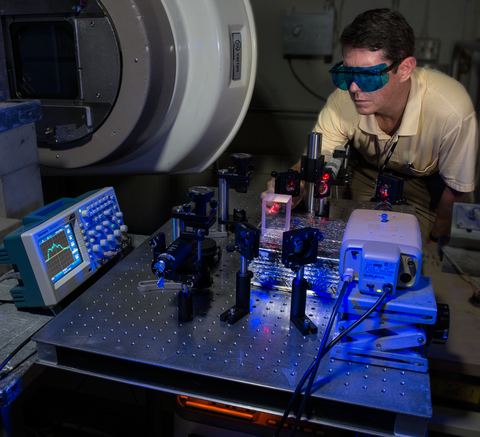Radiation

From delivering cancer therapy to measuring the exposure of nuclear workers, radiation applications increasingly require miniaturized technology. Medical applications frequently deliver ionizing radiation in the form of narrowly focused, pencil-thin beams of X-rays, gamma rays or charged particles. Industrial applications include materials curing, nanofabrication, and sterilization of medical equipment. At the same time, health professionals would like to be able to accurately measure radiation doses to workers carrying chip-based ID cards.
In response to industry requests for smaller, more accurate and more deployable sensors, the NIST on a Chip program is developing photonic radiation detectors based on commercial silicon chip and communications technology. NIST scientists have also studied how silicon photonic sensors perform in harsh radiation conditions found in space.
In one NOAC technology, a novel chip-scale system promises highly accurate radiation readings at smaller dimensions than conventional sensor technology. In a related chip-scale project, hundreds of ultra-small sensors can potentially build a map of radiation dose throughout an irradiated material.
Another NIST group has demonstrated a chip-scale radiation dose-measurement device that can be embedded in an ID card. In the event of a nuclear incident, the technology would enable responders to conduct rapid, real-time screening and triage of individuals who are exposed to radiation.
Click on the boxes below to explore the technology in more detail.

